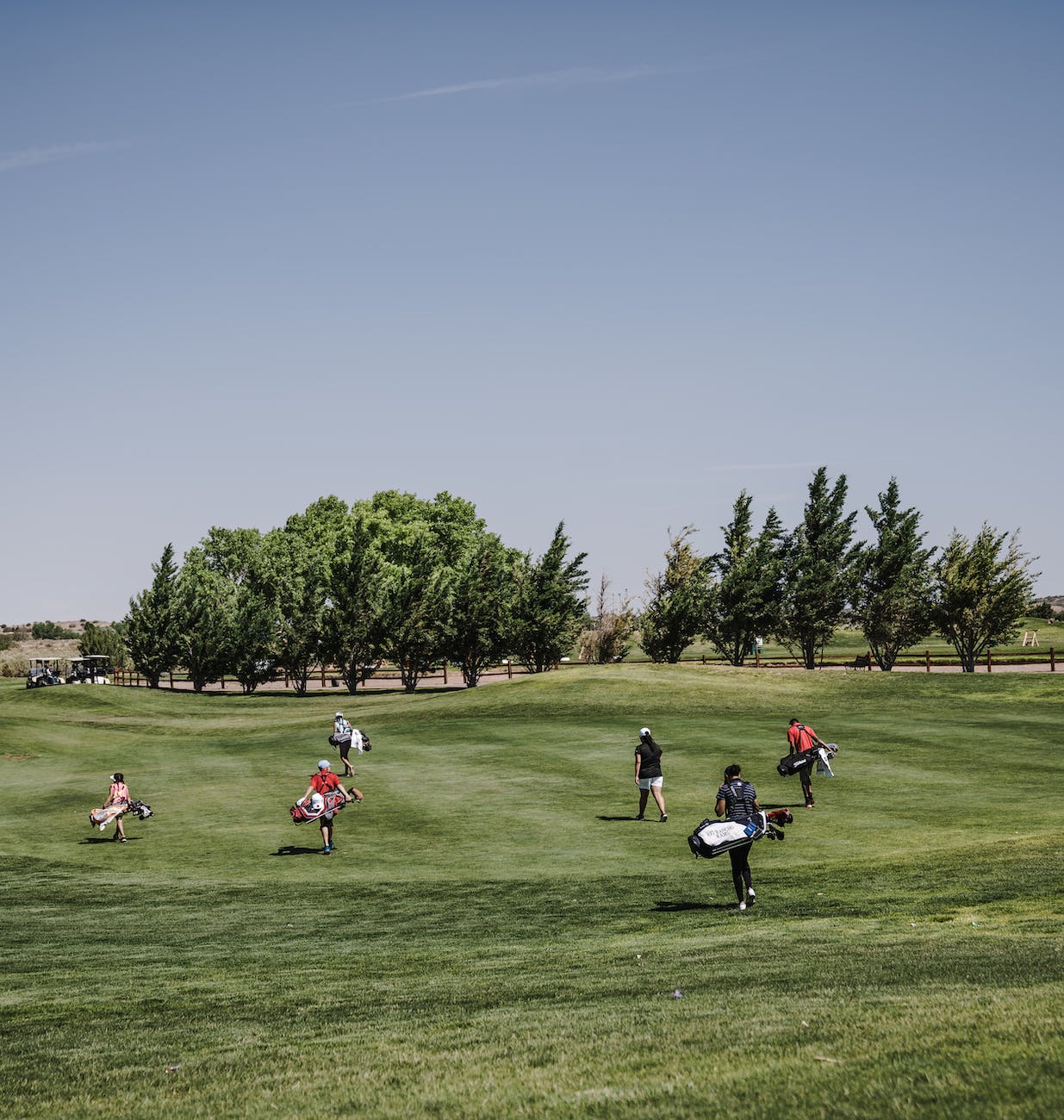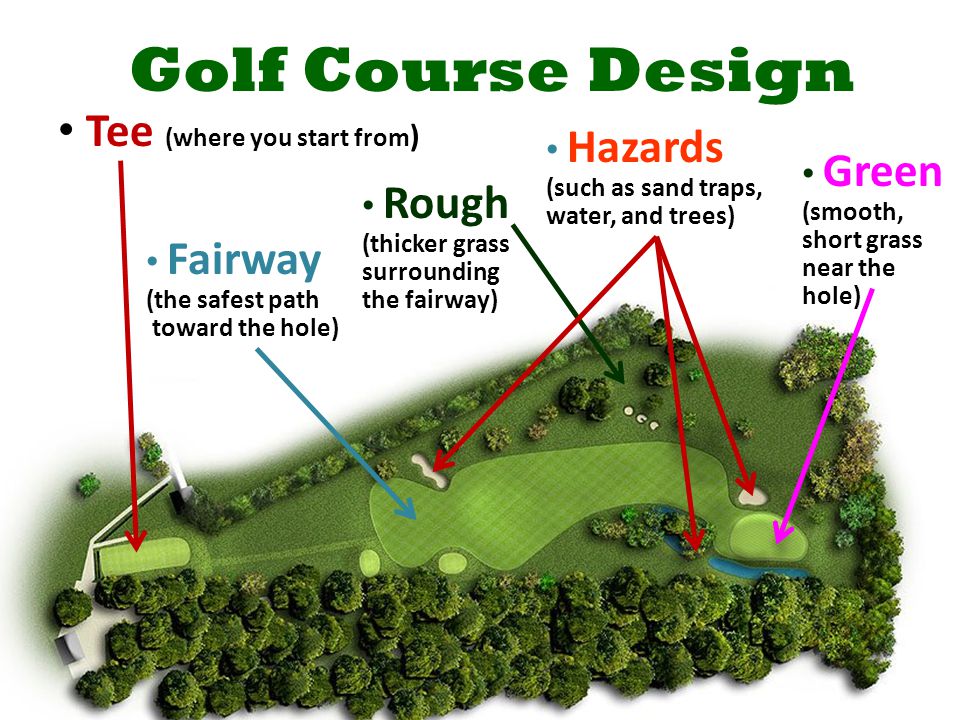What Is the Rough in Golf?
Hey there, fellow golf enthusiasts! Let’s tee off and explore one of the most intriguing aspects of the sport – the rough. So, exactly what is the rough, and why is it such a big deal on most golfers’ courses?
Understanding the Rough on Golf Courses:

Alright, let’s get right into it. What exactly is the rough in golf? The rough in golf refers to those areas on the golf course that aren’t as neatly manicured as the fairways or greens.
You’ll notice that on most courses, the grass here is taller and denser, creating a challenging landscape to navigate. Picture this: you’re playing on a beautiful course, and instead of your ball landing on the smooth fairway or green, it ends up in this rough area. Yikes!
The rough is an essential component of any course, and it plays a significant role in adding excitement and variety to the game. Unlike the well-groomed fairways and greens, the rough can be unpredictable. The grass may be longer, uneven, and thick, making it more challenging for golfers to control their shots.
Navigating Through Different Types of Grass:

When your golf ball lands in the rough, especially in the general area of the thick rough or taller grass, things can get a bit hairy. The grass is dense, which means getting a clean shot out of it can be quite challenging. It can be like trying to hit your ball out of a jungle!
Now, this is where your expertise as a golfer comes into play. You’ll need to adjust your swing technique and choose the right golf club to navigate through the thick grass, and get your ball back onto the fairway or green.
Types of Rough on a Golf Course

When it comes to golf courses, the rough refers to the areas surrounding the fairways and greens that are covered with longer grass. The rough plays an important role in golf courses in adding challenge and strategic elements to the game. Here are some common types of rough you may find on a course:
-
Primary Rough: This is usually the longest and thickest type of rough found on a course. It is intentionally left untrimmed and can be quite challenging for golfers as it makes it harder to control both distance and accuracy.
-
Secondary Rough: The secondary rough is generally shorter than the primary rough but still taller than fairway grass. It acts as a transition area between the fairway and the primary rough, offering slightly less difficulty compared to its thicker counterpart.
-
Intermediate Rough: As the name suggests, this type of rough falls between secondary rough and fairway grass in terms of height. It provides moderate resistance without being overly punishing.
-
Fringe Rough: Found around greens, fringe rough is typically cut slightly higher than putting green grass but lower than other types of rough on the course. It serves as a barrier around greens while allowing players more control over their shots near these areas.
-
Collar or Apron Grass: This strip of short-cut turf surrounds putting greens, connecting them with either fringe or intermediate/primary roughs depending on design choices made by course architects.
-
Tee Box Rough: Some courses feature slightly longer grass surrounding tee boxes, posing additional challenges at each hole’s starting point.
-
Native Areas / Naturalized Zones: In certain cases, portions of a course might be left entirely untouched or restored back to their natural state with native vegetation like tall grass prairies or wetlands included within play boundaries.
Understanding different of courses and types of rough helps players anticipate challenges they may face during their rounds while also appreciating the design choices made by course architects.
It is essential to strategize accordingly and adjust shot-making techniques while navigating through these diverse rough areas on the course.
Tips for Conquering the Rough:
Hey, we’ve got your back with some tips for tackling the rough like a pro:
1. Club Selection: Pay attention to your club choice when playing from the rough. It can make a big difference in how your shot turns out. Depending on the distance to the green and the thickness of the grass, you may need to use a golf club with more loft to pop the ball up and out of the rough.
2. Weather Conditions: Keep an eye on the weather, as it can affect your shots in the rough. Strong winds or heavy rain can add some unexpected twists to your game. Adjust your strategy accordingly and plan for any weather-related challenges.
3. Stay Positive: Remember, not all golf courses have rough areas, but when you do encounter them, stay positive and keep that winning attitude. Golf is a mental game, and a positive mindset can make a significant difference in how you handle tough situations.
Conclusion
In conclusion, understanding the rough in golf is essential for any golfer looking to improve their game. The rough refers to the long grass that borders the fairways and greens on a course. It may seem like an inconvenience, but it serves as a strategic element that can significantly impact a player’s performance.
Navigating a golf ball through the rough requires skill and precision. A ball landing in the rough can pose challenges such as reduced distance, unpredictable lies, and difficulty controlling spin. However, with practice and proper technique, players can learn to effectively manage these obstacles.
Golfers should approach shots from the rough with caution and adapt their strategy accordingly. Taking into account factors such as lie, club selection, swing speed, and shot trajectory will greatly increase the golfer’ chances of success when facing this challenging terrain.
By familiarizing themselves with the characteristics of different types of roughs (such as thick or the main rough or thin), golfers can better anticipate how their shots will be affected. This knowledge empowers them to make informed decisions on whether to play golf conservatively or take calculated risks when attempting shots from these areas.
So next time you find yourself tangled up in the long grass on a golf course – don’t panic! Embrace your surroundings and let your skills shine through.

